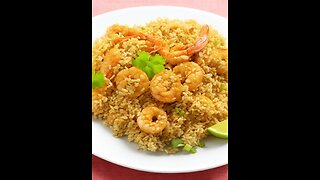Eating Live Dancing Shrimp (Goong Ten in Bangkok Thailand)
The concept of eating live dancing shrimp typically involves consuming small shrimp that are still alive and moving. This practice is more commonly associated with certain Asian cuisines, particularly in countries like China and Japan. The dish often goes by different names, such as "dancing shrimp," "dancing prawns," or "drunken shrimp."
Here's a description of the process and the dish:
Live Shrimp: The dish starts with live, small shrimp. These shrimp are usually chosen for their size and tenderness.
Preparation: The live shrimp are typically prepared by removing the head and shell, leaving only the tail intact. Some variations may include keeping the head and shell on for added visual appeal.
Marination: The prepared shrimp are often marinated in a mixture that can include soy sauce, rice wine, garlic, ginger, and other seasonings. This not only adds flavor but can also help to partially immobilize the shrimp.
Serving: The live and marinated shrimp are then served on a plate or in a bowl. The shrimp may still be moving or displaying some level of activity, giving the impression of "dancing."
Consumption: Diners typically use chopsticks or their hands to pick up the live shrimp and eat them while they are still moving. The idea is to enjoy the freshness and unique texture of the live shrimp.
It's important to note that eating live dancing shrimp has sparked ethical concerns and debates regarding animal welfare. Critics argue that the practice is inhumane, as it involves consuming live animals. Some countries and regions have implemented regulations or outright bans on serving live animals for consumption due to these concerns.
Additionally, while the dish may be considered a delicacy by some, it is not universally accepted, and many people find the concept of eating live animals unsettling or ethically questionable. It's essential for individuals to be aware of cultural differences and sensitivities surrounding food practices while considering the ethical implications associated with consuming live animals.
-
 20:14
20:14
Daviandika
1 year agoDANCING SQUID SASHIMI + BEST Seafood and Noodle Tour of Hokkaido, Japan's Street Food!
10 -
 0:36
0:36
FATHERFISH
10 months agoArt of Raising Sea Monkeys! - Brine Shrimp is the BEST Fish Food #shortsfeed
81 -
 0:58
0:58
FlavorsOfIndianOcean
9 months agoAsian Prawns Fried Rice ASMR
72 -
 2:51
2:51
Saysarap
3 years agoEating jellyfish in Bangkok Thailand - 👀🙈 crazy street food 🤯
3 -
 1:36
1:36
TastyFaShow
1 year agoHow To Cook TastyFaShow's Homemade Shrimp Fried Rice Recipe
7 -
 8:19
8:19
jevnoszkie07
9 months ago"Bangkok's Top 10 Unique Street Food & Seafood Restaurants"
17 -
 0:58
0:58
FATHERFISH
10 months agoFeeding Brine Shrimp to Guppies - Feeding frenzy over Artemia aka Sea Monkeys
21 -
 4:12
4:12
Various food cambodia
10 months agoBullfrog food cambodia
1.49K -
 0:49
0:49
dvdnguyen
1 year agoChili Garlic Shrimp 🦐
10 -
 13:17
13:17
Jack Torr
2 years agoSEAFOOD FEAST🦞 LIKE YOU'VE NEVER SEEN BEFORE IN THAILAND!